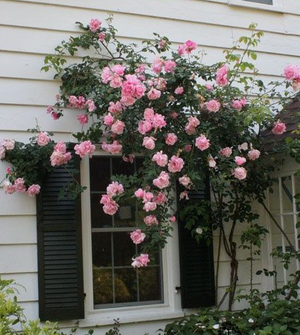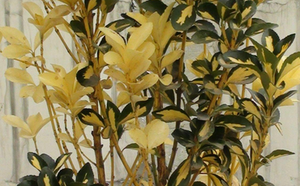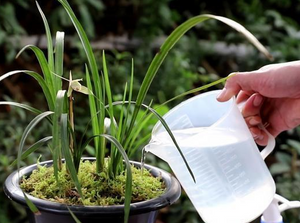What does the pruning rhizome have after narcissus bloom bad

Spring flowering bulbs are ephemeral, so they need to make enough food for themselves during their brief stay in order to sustain the buds and leaves during summer and winter dormancy. Even though they are dormant, there is some metabolism going on inside the bulbs, and that requires food. The more food stored, the better.
When daffodil leaves receive plenty of sunshine (6 hours a day, at least, preferred), the leaves take the carbon from CO2 and the hydrogen and oxygen from water. Photosynthesis occurs in the chloroplasts (organelles containing chlorophyll), and the end products are carbohydrates, which are moved to the bulbs for storage.
What makes all this work is exposure to direct sunlight. Every leaf can photosynthesize, but those efforts are thwarted when green leaves are braided or knotted or (gasp!) cut off. Yes, some of the surfaces of a tidy bun or braid will get sun, but it will be greatly reduced. The more sun the plants get, the more photosynthesis happens. And that translates into more carbohydrates being stashed in the bulbs.
Maturing leaves can look untidy, but there are ways to disguise them. You can plant them among daylilies and liriope, which have similar foliage. Or plant perennials, such as garden phlox or black-eyed Susans, in front of daffodils to hide yellowing leaves. When they begin to yellow and fall over, gently push them closer to the ground where they’re less visible but can still gather the sun’s energy.
When planting a few kinds of daffodils, plant the early bloomers toward the back of the bed, and the later bloomers in front of them. And always pinch off the seedpods, which consume resources that should be saved for the bulbs.

When clumps of daffodils look like this
, they need to be dug up, divided, and planted probably deeper into the soil. But wait until most of the foliage has turned yellow or brown before disturbing them.
Bulbs need good drainage, so prepare the soil first, if needed. Then dig up the clumps, flake off the soil, and divide the bulbs, noting which end is up. After planting bulbs for myself and for clients for decades, I find that the most common reason for daffodils to grow “blind” (without flowers) is planting them too shallowly. I’ve seen recommendations on labels and online to plant them only 4″ deep or with only 1″ of soil on top of the bulbs. Nonsense!
In soil I’ve prepared, daffodils with large bulbs are planted so the bottom of the bulb is 8″ or 9″ below the surface of the soil. Small bulbed daffodils go 6″ deep. Generally, most large bulbs should be as deep in the ground as 3 times their height. For crocuses and other minor bulbs—-4 or 5 times their height.
Also, be careful how much fertilizer you give your bulbs. Too much nitrogen makes lots of leaves at the expense of flowers. You’ve probably seen random clumps of daffodils in full bloom popping up along the roadside or around abandoned structures. And they can return year after year, for several decades…with no input from anyone. They live off the meager offerings Mother Nature supplies—-fall leaves and other debris that decompose above them.
It’s still too early to dig and divide the bulbs, but for now you can think about where that new raised bed and all those daffodils will go.
- baohaojing





